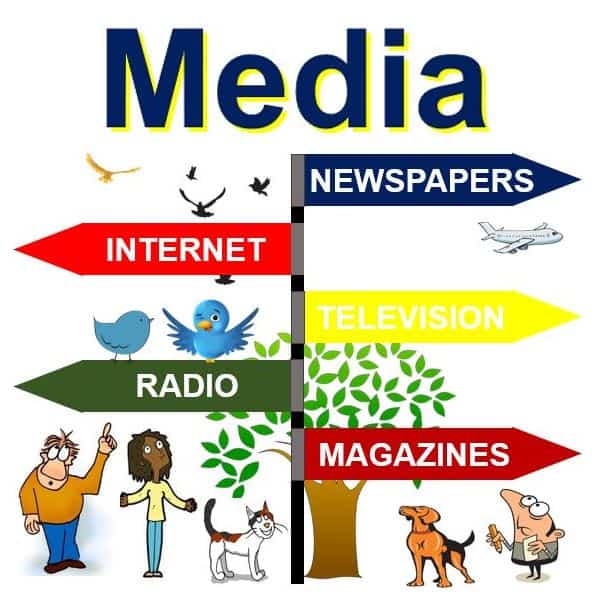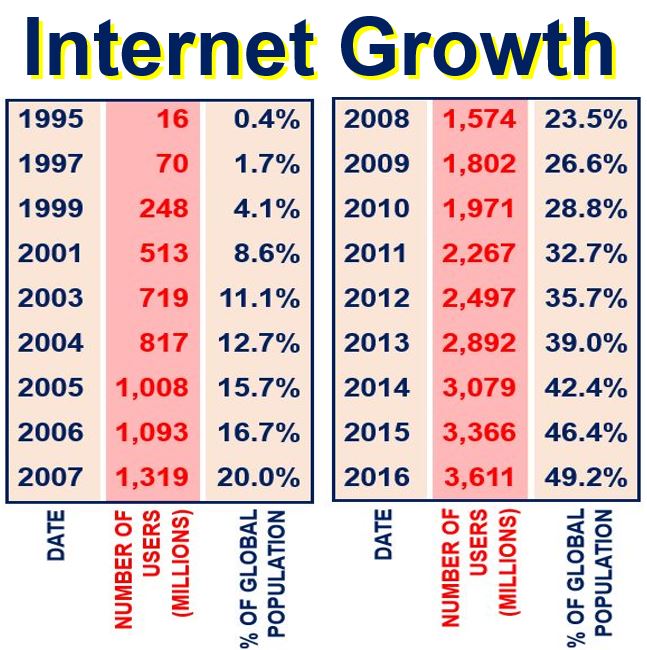POLITICS
What is media? Definition and meaning

The term media, which is the plural of medium, refers to the communication channels through which we disseminate news, music, movies, education, promotional messages and other data. It includes physical and online newspapers and magazines, television, radio, billboards, telephone, the Internet, fax and billboards.
In the English language, “media” refers to the various means or channels of communication and information dissemination that are used to reach and influence a large audience. It encompasses a wide range of formats and technologies through which information, news, entertainment, and messages are transmitted to the public.
Media can be broadly categorized into different types:
- Print Media: This includes newspapers, magazines, brochures, and any other printed materials.
- Broadcast Media: This refers to the transmission of audio and video content through radio and television channels.
- Digital Media: With the advent of the internet, digital media has become increasingly popular. It includes websites, blogs, social media platforms, online news portals, podcasts, and streaming services.
- Social Media: These are online platforms that facilitate user-generated content and interaction, such as Facebook, Twitter, Instagram, and YouTube.
- Electronic Media: This covers media transmitted through electronic devices, like DVDs, CDs, and online streaming services.
The primary purpose of media is to inform, educate, entertain, and create awareness among the public. It plays a crucial role in shaping public opinion, influencing social and political discussions, and reflecting cultural trends. Media also serves as a platform for advertising and marketing products and services.
However, it’s important to note that with the rise of media, there are concerns about accuracy, bias, and the potential spread of misinformation or “fake news.” Therefore, it is essential for consumers to be critical and discerning when consuming media content from various sources.
It describes the various ways through which we communicate in society. Because it refers to all means of communication, everything ranging from a telephone call to the evening news on television can be called media.
When talking about reaching a very large number of people we say mass media. Local media refers to, for example, your local newspaper, or local/regional TV/radio channels.

We used to get all our news and entertainment via TV, radio, newspapers and magazines. Today the Internet is gradually taking over. Print newspapers are struggling as hundreds of millions of people each year switch to news sources online.
Different types of media
Media can be broken down into two main categories: broadcast and print. The Internet has also emerged as a major player, as a rapidly-growing number of people globally get their news, movies, etc. online.
Print Media includes all types of publications, including newspapers, journals, magazines, books and reports. It is the oldest type, and despite suffering since the emergence of the Internet, is still used by a major proportion of the population.
Broadcast Media refers to radio and TV, which came onto the scene at the beginning and middle of the 20th century respectively. Most people still get their news from TV and radio broadcasts – however, experts predict that it will not be long before online sources take over.
Over the past twenty years, cable news has grown in importance.
The Internet – specifically websites and blogs – are rapidly emerging as viable and major channels of communication as more and more people seek news, entertainment and educational material online. The term ‘viable,’ in business, means capable of generating profits for many years.
Virtually every part of the Internet has become a medium of communication – most free email services have little boxes that display ads and other messages.
The Internet as we know it today did not really take off until the 1990s. In 1995, just 1% of the world’s population was online, compared to over 49% today. The notion of the Internet started in the 1960s in the USA during the Cold War, when the military and scientists were worried about a missile attack, which could knock out the telephone system.
Stephen Hawking, a British theoretical physicist, cosmologist, author and Director of Research at the Centre for Theoretical Cosmology within the University of Cambridge, once said: “The media need superheroes in science just as in every sphere of life, but there is really a continuous range of abilities with no clear dividing line.”
What is social media?
Social media is a collective of online communication channels where communities interact, share content and collaborate.
Websites and apps dedicated to social networking, microblogging, forums, social bookmarking, wikis and social curation are examples of some types of social media.
The most famous social networking companies are Facebook, Twitter, Google+ and Instagram.

Just twenty-one years ago, very few people across the world knew what the Internet was. Today it has become a part of our lives. It is destined to become the number 1 channel for communicating with the world’s population. (Data Source: internetworldstats.com)
Media ‘is’ or ‘are’?
If media is the plural of medium, then one would think that it should be used grammatically in the plural – the verb that follows it should be in the plural form, shouldn’t it?
However, in most literature it is used as a singular noun, and is interpreted as a collective singular, similar to other collective nouns such as ‘team’ or ‘group’. Therefore, to write the ‘media is’ is perfectly acceptable today. Some people may insist it is wrong, but it is still acceptable – languages are constantly evolving.
According to Collins Dictionary, media is:
“The means of communication that reach large numbers of people, such as television, newspapers, and radio.”
It all started thousands of years ago
Human communication through designed channels – not through speech or gestures – dates back to many tens of thousands of years ago when our ancient ancestors painted on the walls of caves.
The cave paintings at Lascaux in southwestern France, estimated to be over 17,000 years old, are no less viable expressions of media than our current TV shows and magazines.
The Persian Empire – c. 550–330 BC – played a major role in the history of human communication through designed channels. Persian Emperor Cyrus the Great (c. 550 BC) developed the first ever real postal system. It was an effective intelligence-gathering apparatus, called Angariae, a term that later indicated a tax system.
Thomas Carlyle (1795-1881), a Scottish philosopher, satirical writer, essayist, historian and teacher claimed in the 1830s that the printing press created the modern world by destroying feudalism. Many historians say that the advent of the printing press was the birth of what we know today as media.
The term media in its current application relating to channels of communications was first used by Marshall McLuhan (1911-1980), a Canadian professor, philosopher, and public intellectual who said: “The media are not toys; they should not be in the hands of Mother Goose and Peter Pan executives. They can be entrusted only to new artists, because they are art forms.”
By the mid-1960s, the term spread to general use in the United States, Canada and the United Kingdom.
https://tube.rvere.com/embed?v=1B-ECKQrZSo

The Hear UP is a leading technology publication house. Our origin dates back to 2016 as a small forum for technology enthusiasts. Since then, The Hear UP has transformed into a trusted source for emerging tech and science news.
The majority of our news is provided by staff writers. Other news is provided by news agencies and freelancers.
All of our contributors are members of the Society of Professional Journalists.
If you need to contact a news editor from The Hear UP you can find a list of email addresses on our contact page.
Our Organisation
The Hear UP










